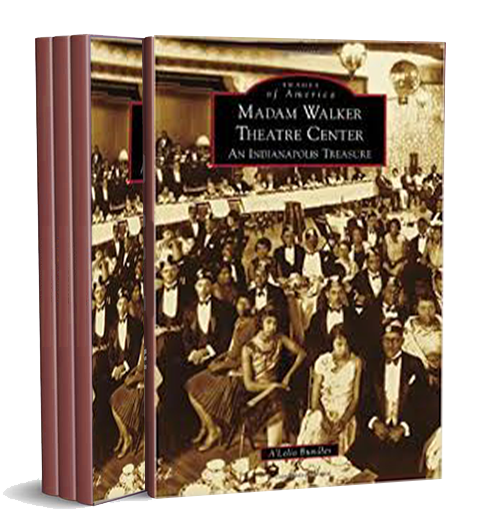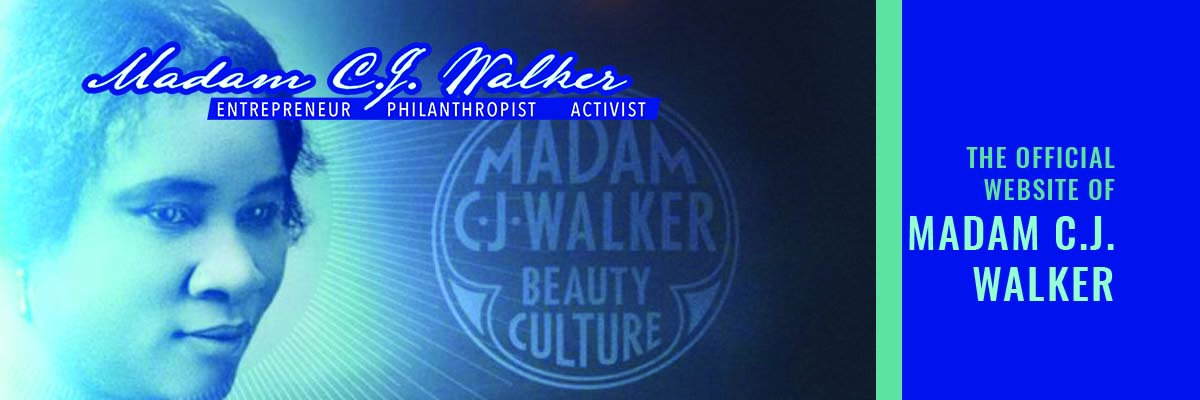Madam Walker Theatre Center


More than 200 photos with dozens of vintage images from the Madam Walker Family Archives! A quick and easy introduction to the Walker story!
As they watched construction of the block-long flatiron building brick by brick throughout 1927, African American residents of Indianapolis could scarcely contain their pride. This new headquarters of the Madam C.J. Walker Manufacturing Company, with its terra-cotta trimmed facade, was to be more than corporate offices and a factory for what then was one of America’s most successful black businesses.
In fact, it was designed as “a city within a city,” with an African Art Deco theater, ballroom, restaurant, drugstore, beauty salon, beauty school, and medical offices. Generations of African American families met for Sunday dinner at the Coffee Pot, enjoyed first-run movies and live performances in the Walker Theatre, and hosted dances in the Casino. Today, this National Historic Landmark is an arts center anchoring the Indiana Avenue Cultural District.
Purchase Your Autographed Copy!
We regret that we can not ship outside of the United States.
As they watched construction of the block-long flatiron building brick by brick throughout 1927, African American residents of Indianapolis could scarcely contain their pride. This new headquarters of the Madam C.J. Walker Manufacturing Company, with its terra-cotta trimmed facade, was to be more than corporate offices and a factory for what then was one of America’s most successful black businesses.
In fact, it was designed as “a city within a city,” with an African Art Deco theater, ballroom, restaurant, drugstore, beauty salon, beauty school, and medical offices. Generations of African American families met for Sunday dinner at the Coffee Pot, enjoyed first-run movies and live performances in the Walker Theatre, and hosted dances in the Casino. Today, this National Historic Landmark is an arts center anchoring the Indiana Avenue Cultural District.
The New Yorker (March 19, 2001)Bundles’s great-great-grandmother Madam C. J. Walker founded a cosmetics empire in the early nineteen-hundreds. Born in 1867 to former slaves on a Louisiana plantation, Walker was working as a laundress in St. Louis in the eighteen-nineties when she began losing her hair. First, she developed the scalp ointments that would make her rich; then she established a network of black women to use and sell the products, who went on to escape poverty as she had. After years of contributing to black charities and anti-lynching campaigns, she died in her Westchester mansion, not far from the Rockefeller estate. The author’s extensive research and unemphatic style encourage readers to find their own relation to this exemplary American figure. |
The New York Times (April 1, 2001)Walker’s biographer and great-great granddaughter, A’Lelia Bundles, does not overestimate her importance when she calls Walker one of the pioneers in her use of direct sales (the Fuller Brush Company was founded in 1906, the same year as Walker’s), marketing strategies and commissions. Bundles writes: ”As an early advocate of women’s economic independence she provided lucrative incomes for thousands of African-American women who otherwise would have been consigned to jobs as farm laborers, washerwomen and maids.” Walker’s philanthropy ranged from the virtuous Y.W.C.A. to the radical N.A.A.C.P.; she began her career soliciting Booker T. Washington’s approval and ended it working with W. E. B. Du Bois, Monroe Trotter and Ida B. Wells-Barnett. Shortly before she died in 1919, she planned to organize her sales agents into local clubs that could use their economic clout to protest lynching and other civil rights abuses while improving conditions in their communities. |
Tiffany Gill “Not Even Past” (July 2011)Madam C.J. Walker is the best known of the pioneering generation of beauty culture educators and manufacturers, and A’Lelia Bundles’ well researched book is the first biography of this industry mogul. Bundles, who is Walker’s great-great granddaughter, takes the reader on a journey from Walker’s humble beginnings as the child of a Louisiana sharecropper to the end of her life when she died as one of the wealthiest black women of the early twentieth century. In addition, the book provides an in depth examination of the entrepreneurial challenges and triumphs of the early black beauty industry. |



